Some of Earth’s weirdest mushrooms can shoot their spores at speeds of 90 kph. Others actually bleed red sap when cut. Nature’s fungi kingdom is so weird, sometimes it feels like it must be fiction.
The typical mushroom comes with a stem and cap. But that is just one of many, many forms a mushroom can take. The devil’s fingers fungi burst from the ground like zombie hands. They have no standard cap and gills like the well-known button mushroom in the store. The bleeding tooth fungus oozes red liquid, and it looks for all the world like blood!
These 15 mushrooms we’re showcasing here appear so alien you’ll hardly believe they’re from our planet! Maybe mushrooms aren’t of this Earth, hmmm…
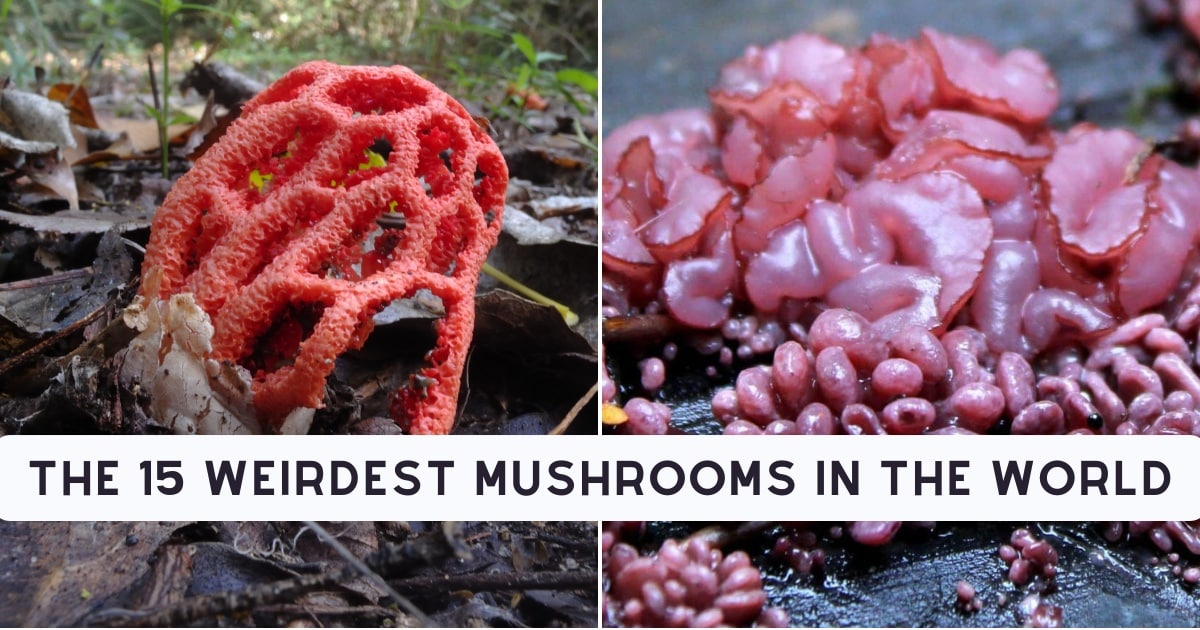
Devil’s Fingers (An Alien Hand Emerging From Earth?)
The devil’s fingers fungus is one of the strangest mushrooms you’ll ever see. It breaks through the soil like something from a sci-fi movie. The sight of its bright red tentacles pushing out of a jelly-like egg looks like an alien invasion in progress.

The devil’s finger mushroom starts out as a white, golf ball-sized egg. The egg is connected to an underground network of threads (mycelia) through a thick strand. It can stay in this egg stage for weeks until the conditions are right.
When the time is right, the mushrooms 4 to 8 bright red arms burst out. These arms start joined at the tips and then fold back dramatically into a shape that looks just like a starfish. Each arm grows 3-4 inches long and gets covered with a dark, olive-colored, sticky substance called gleba. The gleba smells awful – just like rotting flesh.
This weird mushroom is native to Australia and New Zealand but now shows up all over Europe and North America. Scientists think it made its way to Europe with military supplies during World War I. And then, it made its way to North America in mulch or compost. The mushroom loves places with lots of rotting organic matter. You’ll spot it in leaf litter, mulch beds, parks, and gardens.
There’s a smart reason behind its odd looks and terrible smell. Most fungi let the wind carry their spores, but devil’s fingers does things differently. The fungus uses its awful smell to attract flies and other insects. These insects land on the smelly gleba that covers the arms, and the spores stick to their legs. This clever trick helps spread the spores far and wide.
People often mix up Devil’s Fingers with the Red Cage fungus (Clathrus ruber), another member of the stinkhorn family. Scientists have found a white-tentacled variety (C. archeri var. alba) in India’s Shola Forests.
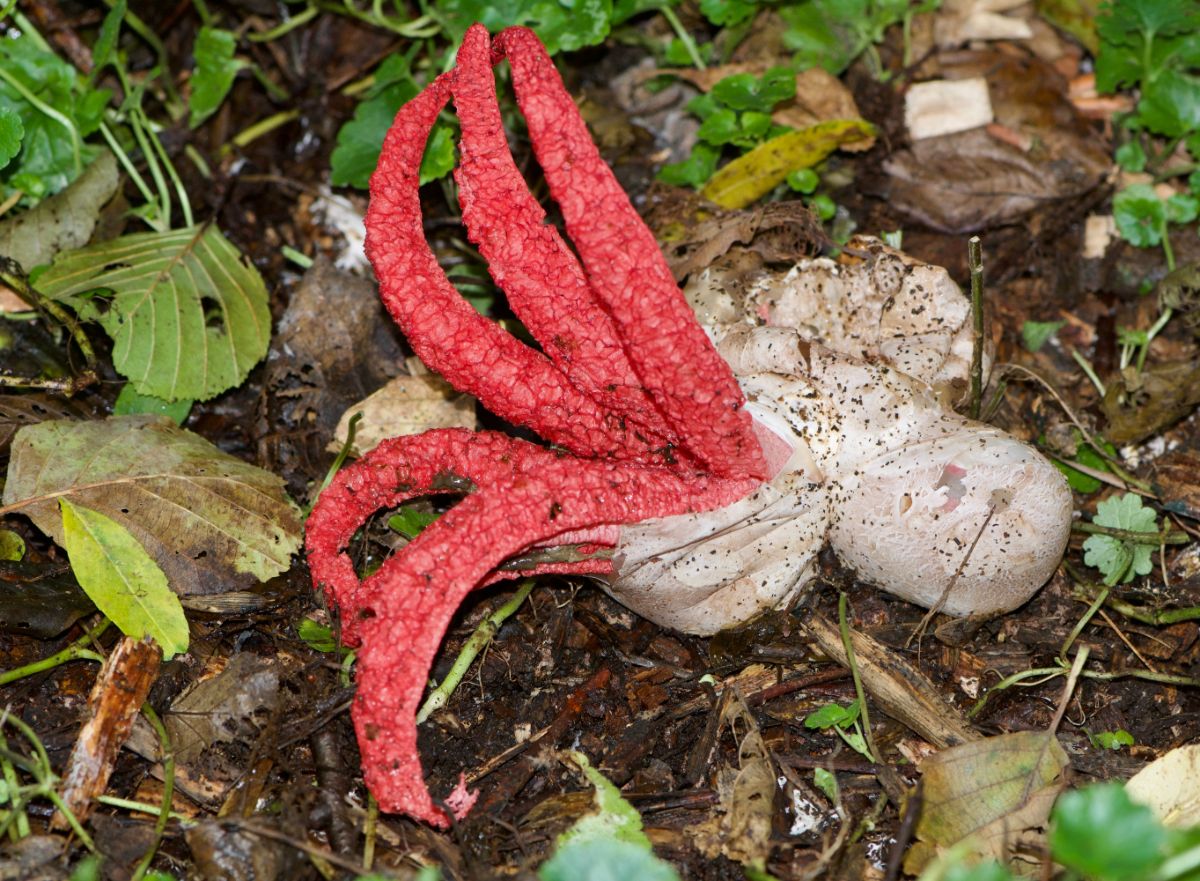
Bleeding Tooth Fungus (This One’s a Horror Show!)
Picture yourself walking through a pine forest when you suddenly come across what looks like a gruesome crime scene—white mushrooms that ooze thick red fluid just like blood. This creepy sight is the bleeding tooth fungus (Hydnellum peckii), one of our planet’s weirdest mushrooms. It is also known as “devil’s tooth” and “strawberries and cream.”
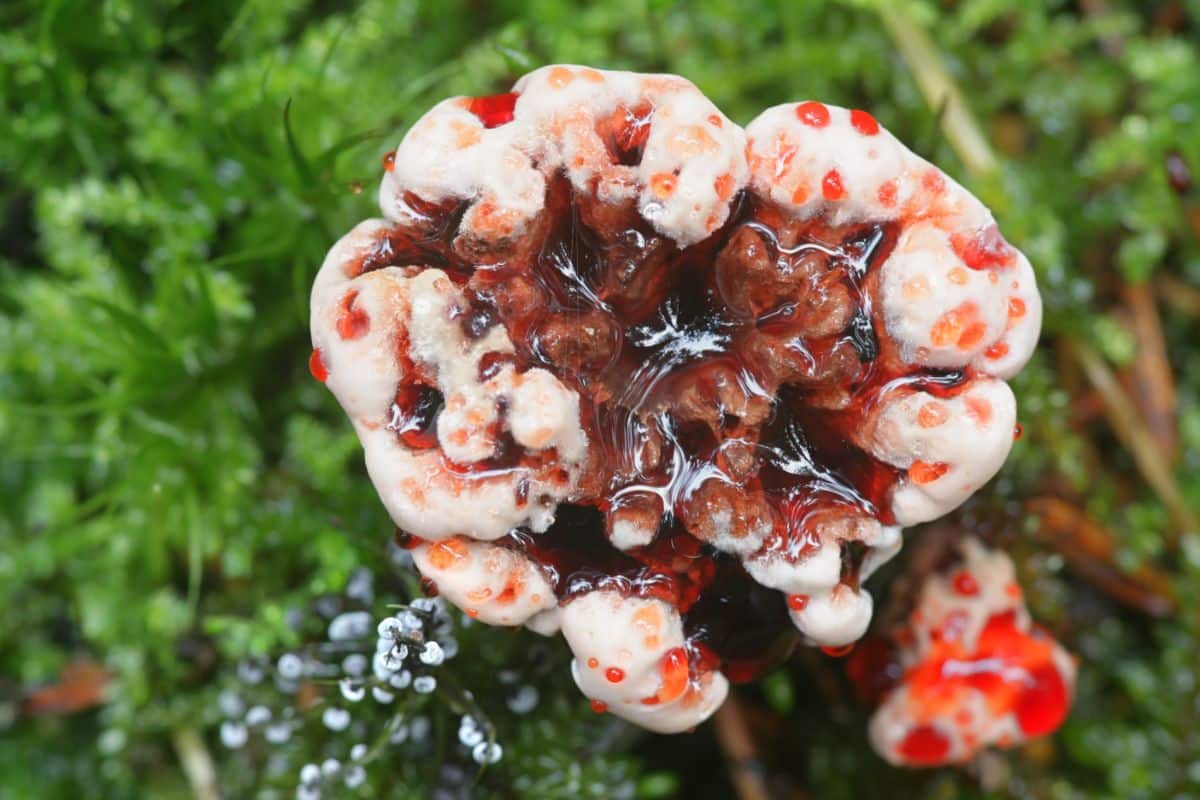
The reddish secretions aren’t blood at all. They come from a process called guttation. The fungus takes in excess water through its roots by osmosis when the surrounding soil gets very wet. This creates pressure throughout the organism and pushes liquid to the surface through tiny pores.
The blood-like appearance comes from a pigment inside the mushroom, though scientists haven’t figured out exactly what’s in the red liquid. Young specimens have a whitish cap with bright red droplets and are very gory-looking. Older specimens are rather bland looking as they turn beige and stop making the red fluid.
This mushroom has a beneficial relationship with coniferous trees in mountainous areas. You’ll spot it anywhere from Alaska to North Carolina. It also grows in Europe, Iran, and South Korea. The fungus faces tough times in some of Europe, though —it’s gone extinct in the Netherlands and became endangered in the United Kingdom in 2006.
The bleeding tooth fungus makes atromentin, a chemical that works like heparin to prevent blood clots. This compound also fights bacteria well. This is especially true with Streptococcus pneumoniae, which causes most bacterial pneumonia cases. Scientists are looking at another compound called thelephoric acid as a possible Alzheimer’s treatment. The bleeding tooth fungus also makes a great natural dye, creating beige to blue-green colors for fabrics.
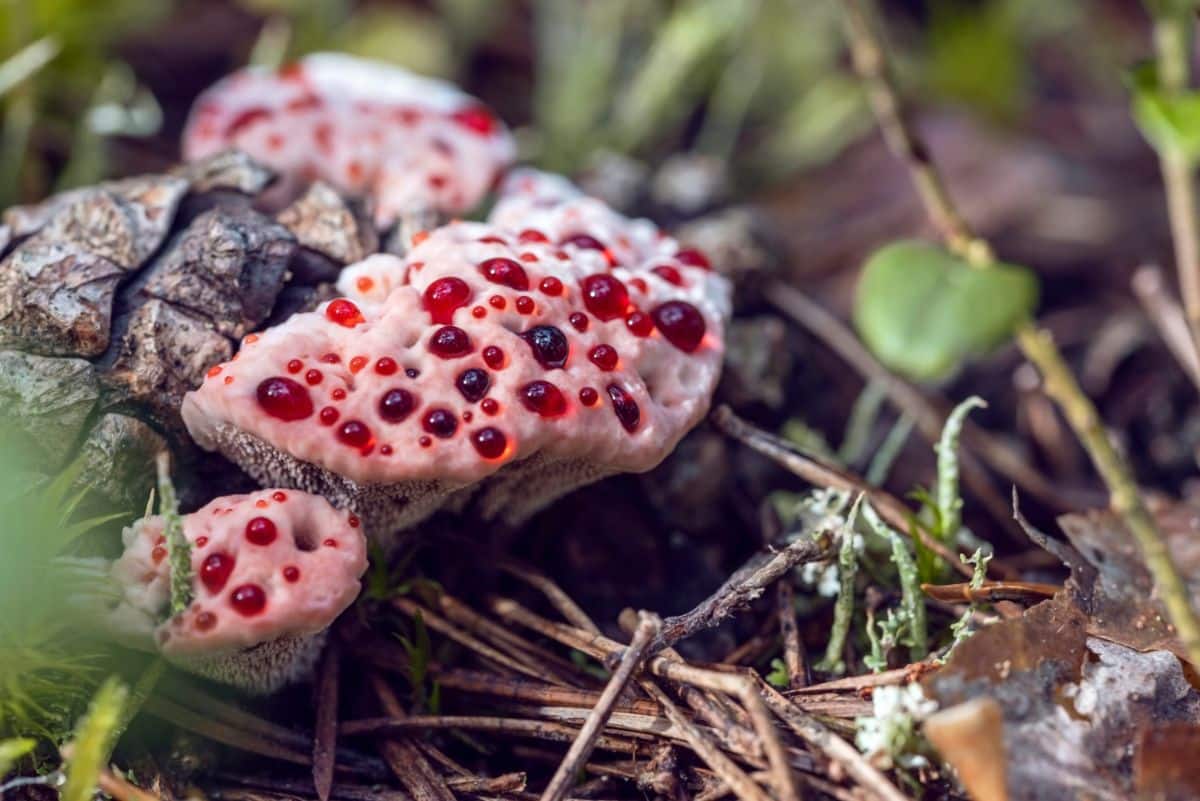
Purple Jellydisc (Alien Blob)
The clusters of pinkish-purple, gelatinous disks of this mushroom look more like alien spawn than fungi from Earth. The purple jellydisc (Ascocoryne sarcoides) creates strange, brain-like formations that earned it the nickname “the alien blob.”
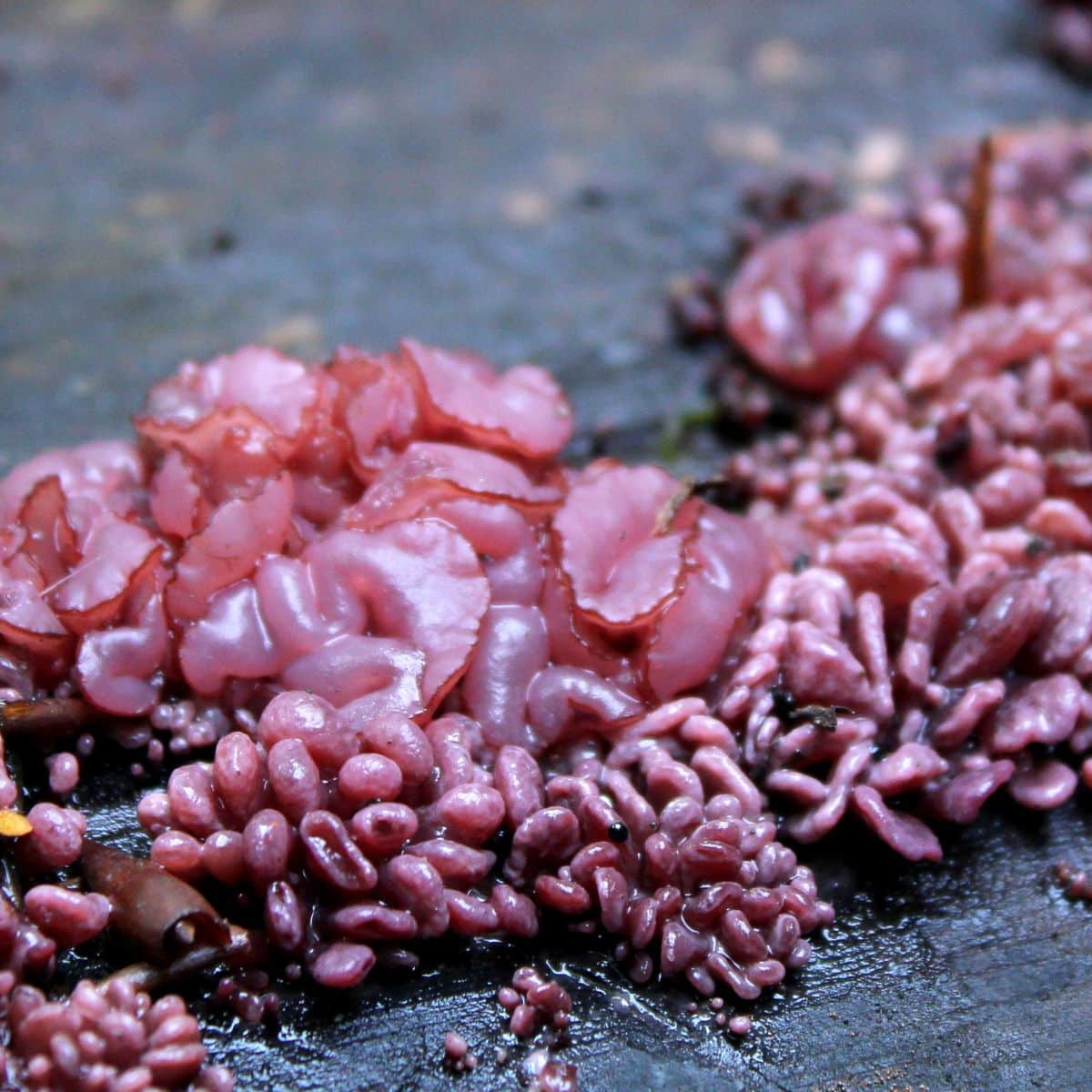
Young purple jellydiscs start as lumpy, irregular gelatinous masses that spread up to 8 inches wide. The spherical, fleshy structures then flatten into disk-shaped or cup-shaped fruiting bodies that measure 0.5 to 1.5 inches across. The mature disks develop wavy edges and a shallow cup form. They often crowd together into knobby clusters that resemble brain tissue.
Purple jelly discs make large amounts of ascocorynin—a terphenyl quinone pigment that turns dark violet in alkaline solutions. This chemical not only gives the mushroom its distinctive color but also might have moderate antibiotic properties.
The mushrooms fruit in late autumn as temperatures drop and literally seem to ooze from the wood.
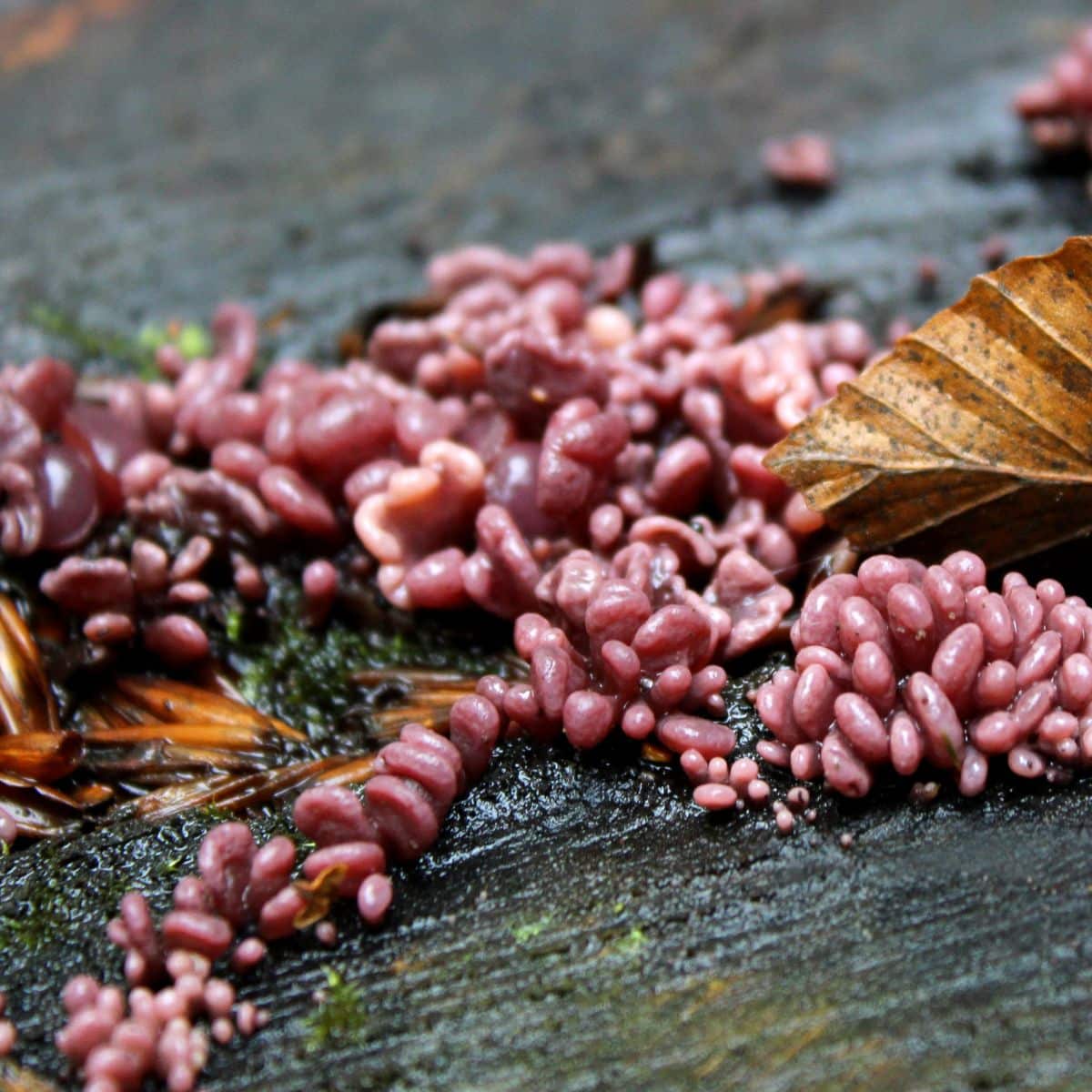
Shrimp of the Woods (Forest Popcorn)
Shrimp of the woods mushrooms (Entoloma abortivum) look like weird white popcorn balls emerging from the forest floor. These unusual mushrooms measure 0.8 to 4 inches wide and are irregular, lumpy white masses. The shrimp of the woods grows at the base of dying elm trees, around decaying wood, or directly from tree roots.
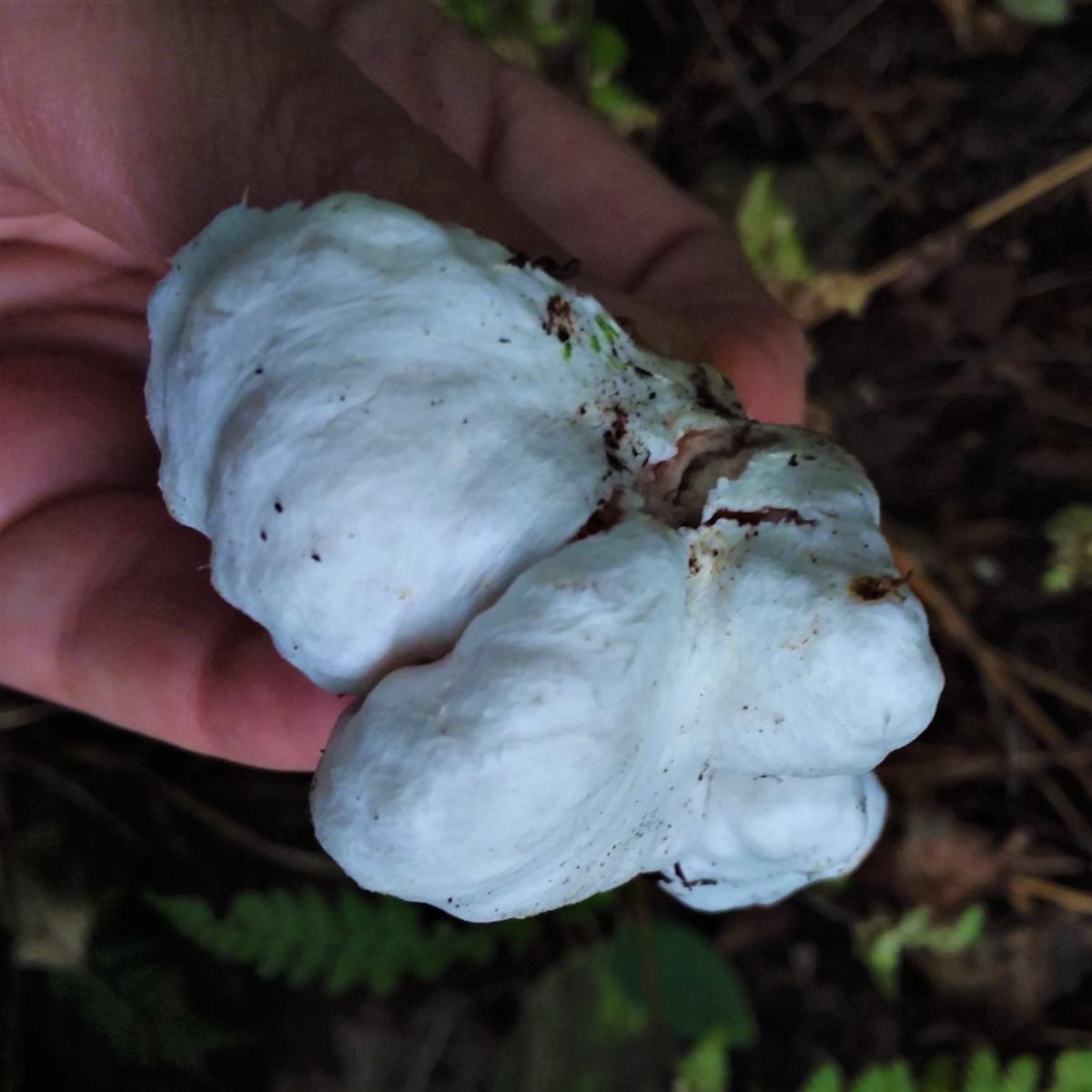
Their appearance is a result of a parasitic relationship with honey mushrooms (Armillaria species). When the Entoloma fungi attack the honey mushroom, they cause them to form these aborted, misshapen lumps. They typically appear in clusters, sometimes alongside their non-aborted form, which has a grayish cap with pink-tinged gills.
The shrimp of the woods mushroom is an excellent edible species. Their name derives from their seafood-like texture when cooked. Don’t let appearances fool you on this one!
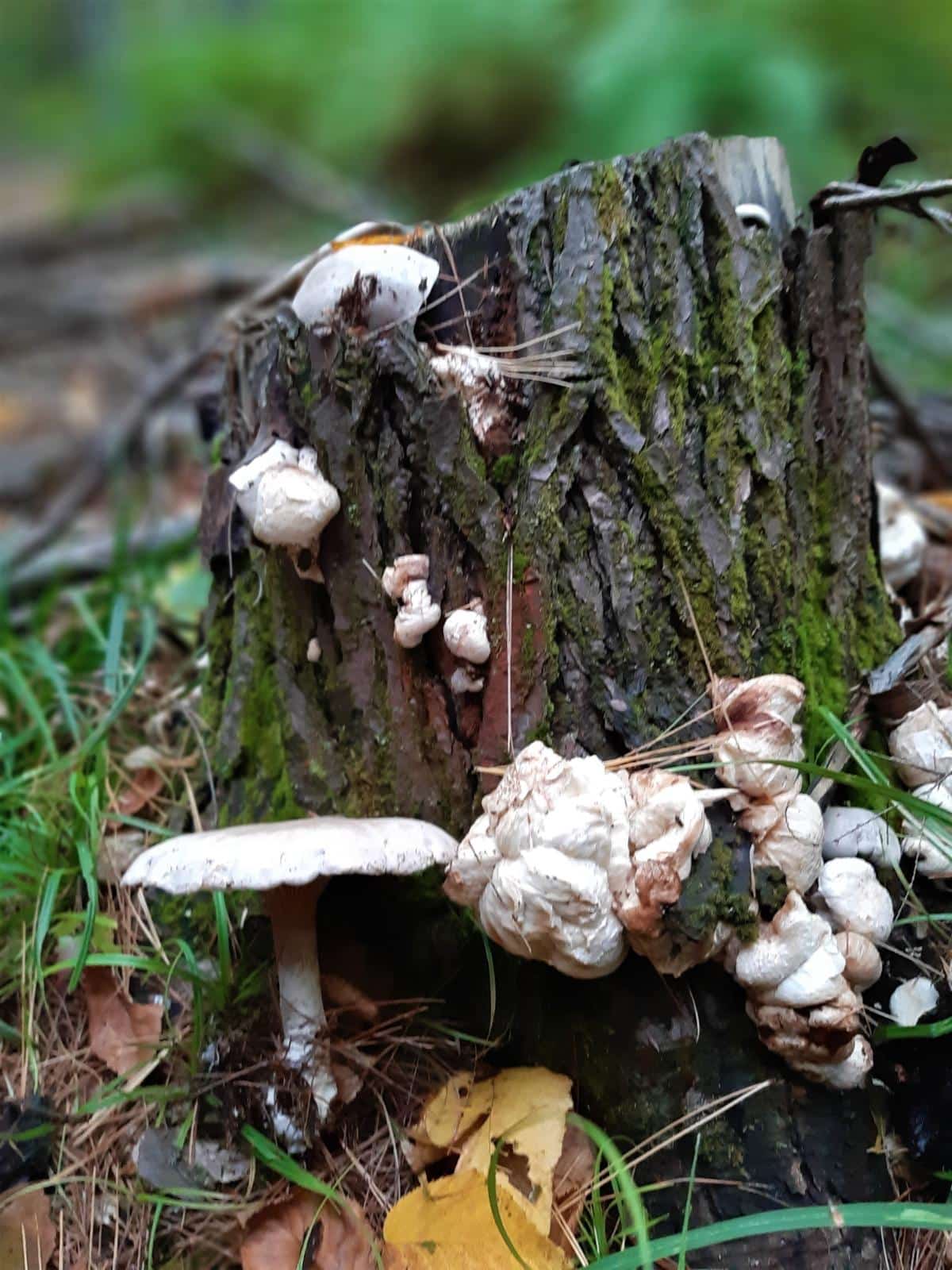
Cordyceps (The Zombie-Maker)
Deep in tropical forests, a strange fungal overlord arranges one of nature’s most disturbing puppet shows. Ophiocordyceps unilateralis, the zombie-ant fungus, is one of the creepiest, and honestly most terrifying, mushrooms on Earth because it knows how to completely hijack insect minds and bodies.
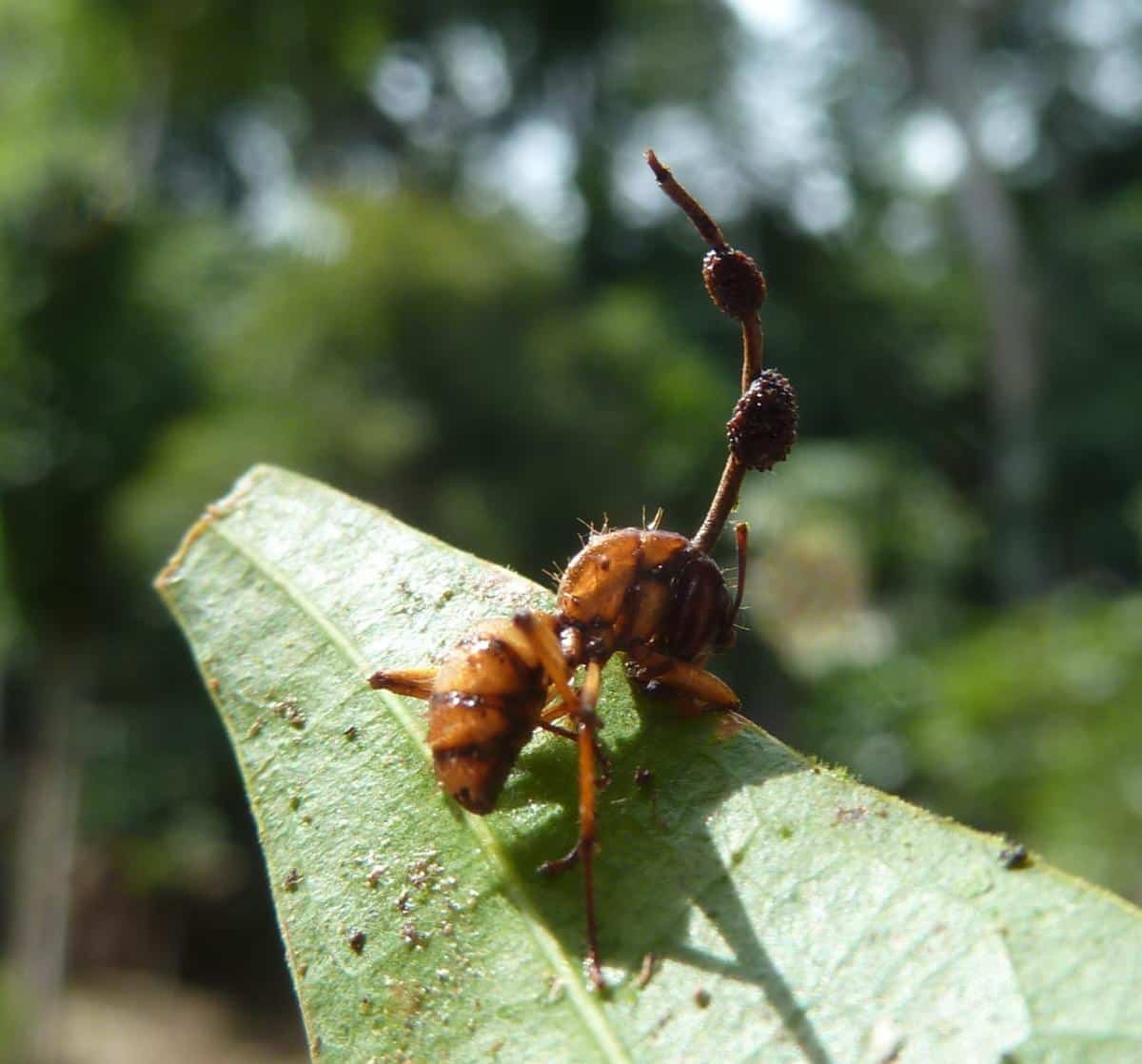
The zombie ant fungus targets Camponotini ants. The infection gradually changes the ant’s behavior through a complex mind-control mechanism. The infected ants leave their normal routines and foraging trails. They move to the forest floor, where humidity and temperature create perfect conditions for fungal growth.
The fungus causes convulsions that make the ant fall from its canopy nest. The ant then ends up climbing about 10 inches above ground level and sinks its mandibles into a leaf vein, usually on the north side of a plant. This “death grip” keeps the ant from falling after death and is the perfect launch platform for the fungus’s reproductive stage.
Scientists have found the fungus doesn’t actually enter the brain. It creates a network of connected tubules throughout the ant’s mandibular muscles. These fungal networks reduce the ant’s energy and calcium levels, controlling the host directly at the muscle level.
The infection kills every ant it infects, yet the zombie ant fungus doesn’t wipe out entire colonies. Only a few ants in a colony get infected at any time. The fungus has developed a balanced approach that ensures its survival without destroying its host species.
In the fungi kingdom, there are over 200 Ophiocordyceps species that can infect at least 10 different insect orders and spiders. Each species has evolved to target specific hosts. This is the mushroom that is featured in the show The Last of Us!
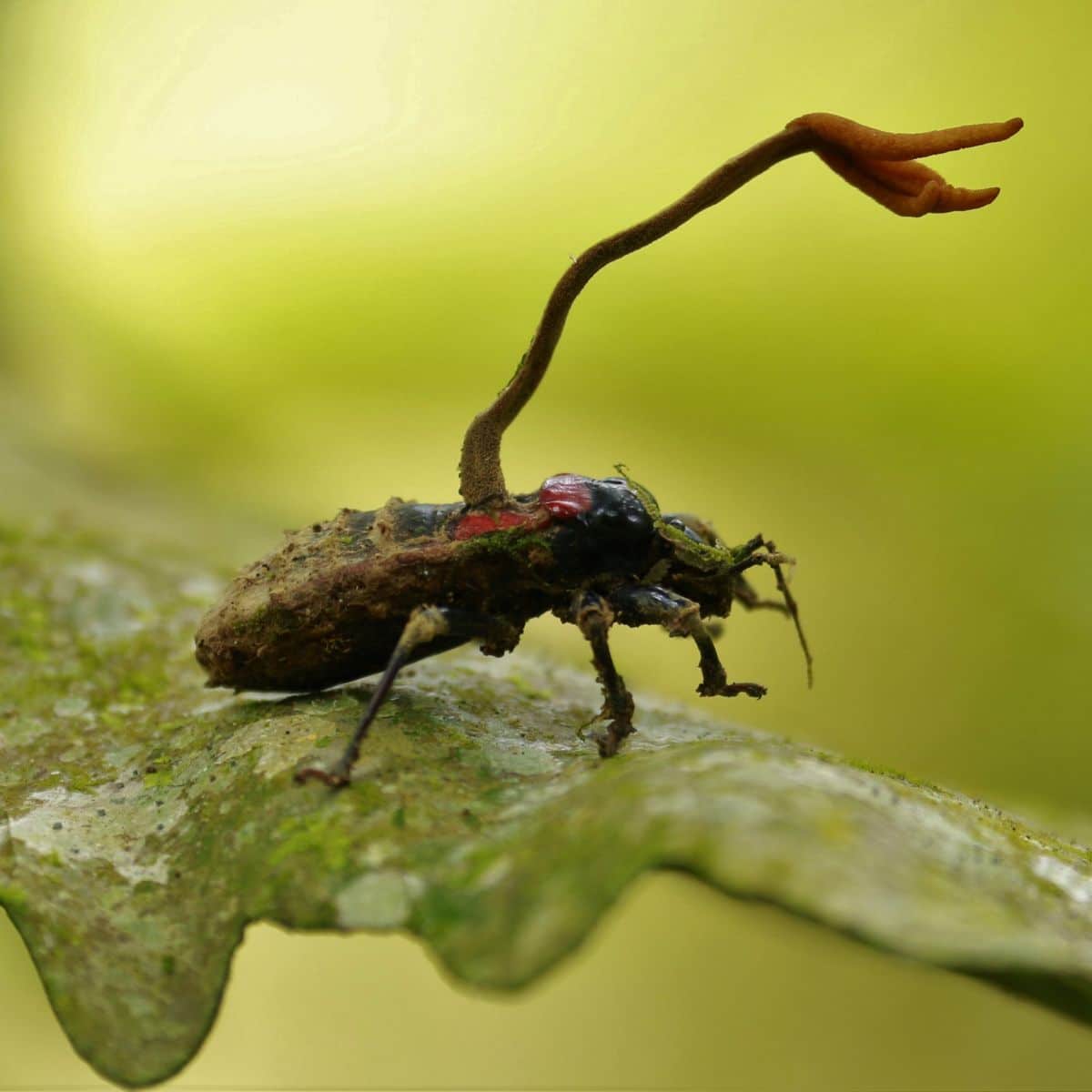
Latticed Stinkhorn (The Thunderdome)
The latticed stinkhorn is an architecturally impressive mushroom! It looks like a bright orange-red geometric cage that seems almost manufactured rather than grown. The latticed stinkhorn (Clathrus ruber) emerges from the ground as a dirty white “egg.” As it matures, it dramatically changes into a hollow sphere with interwoven branches.

Its geometric cage design can reach heights up to 8 inches and is very noticeable, even from a distance. The vibrant colors range from pink to orange to red.
The cage-like structure contains a layer of olive-green slime called gleba that holds the spores. This slime gives off a powerful, foul odor like rotting meat. Flies and other insects find this nauseating smell irresistible. The sticky gleba sticks to their bodies when they land on the cage. The insects then carry the spores wherever they go next. The latticed stinkhorn is a short lived mushroom — it deflates and shrivels within about 24 hours of emerging.
This mushroom is native to the Mediterranean region but now grows on all continents except Antarctica. It grows on decaying woody plant materials, compost, and mulch.

Blue Pinkgill (Impossibly Blue)
The blue pinkgill (Entoloma hochstetteri) is a small mushroom with a blue color that is so intense that it seems unreal. New Zealanders know the blue pinkgill as “werewere-kōkako,” a Māori name that comes from its resemblance to the native kōkako bird’s blue wattles.

There is a Māori legend that the kōkako got its blue wattles after rubbing its cheeks against the mushroom. This mushroom’s popularity led to it being named New Zealand’s favorite fungus in a 2018 poll. It also appears on New Zealand’s fifty-dollar note and was on an 80-cent postage stamp in 2002.
The blue pinkgill is small, with a conical cap that reaches just 1.6 inches in diameter and a stalk up to 2 inches tall. The cap is indigo-blue with green hints, and its gills shift from blue to pink as the spores mature.
The source of its extraordinary blue pigmentation still baffles scientists. Many blue mushrooms contain psilocybin that turns blue through oxidation, but the blue pinkgill doesn’t have any psychoactive compounds.
Scientists at the University of Auckland’s Metabolomics lab figured out how to grow this unusual mushroom. Their research explores using its genes to create nature’s first blue food dye.

Dead Man’s Fingers (Woodland Zombies)
Dead man’s fingers (Xylaria polymorpha) grow from decaying wood and look just like a zombie’s hand reaching up from the grave. Even though they’re small, dead mans’ fingers are entirely freaky looking when growing in small clusters like a hand.
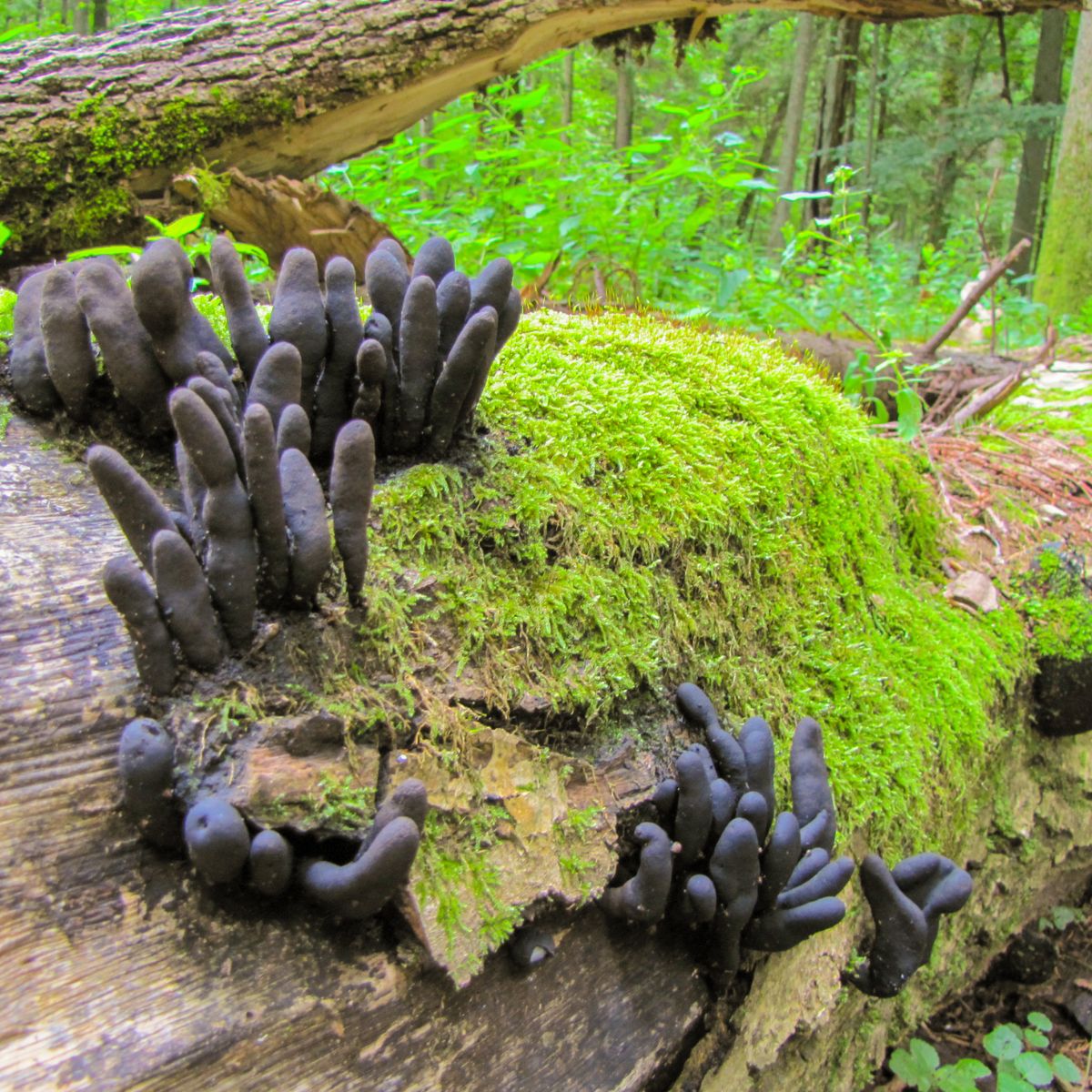
These black, clublike structures grow in groups of three to six finger-like projections that look bent, just like arthritic knuckles. Each fungal “finger” grows 3 to 8 inches tall and 1 to 3 inches thick. The way these dark projections break through the forest floor or pop out of rotting wood creates an unmistakable hand-like shape. Their wrinkled, charcoal-like texture makes them look even more like a dead person’s decomposing hand reaching out from below.

Beefy False Morel aka Beefsteak Mushroom (Mushroom Brains)
The beefy false morel (Gyromitra esculenta) has a wrinkled cap that looks just like human brain tissue. It has a red-brown cap with brain-like lobes that measure 4 to 8 inches high and 3 to 12 inches wide. These rounded twists create hollow chambers inside the structure. The beefy false morel has a fragile, creamy-white stem with several irregular tube-like hollows inside.
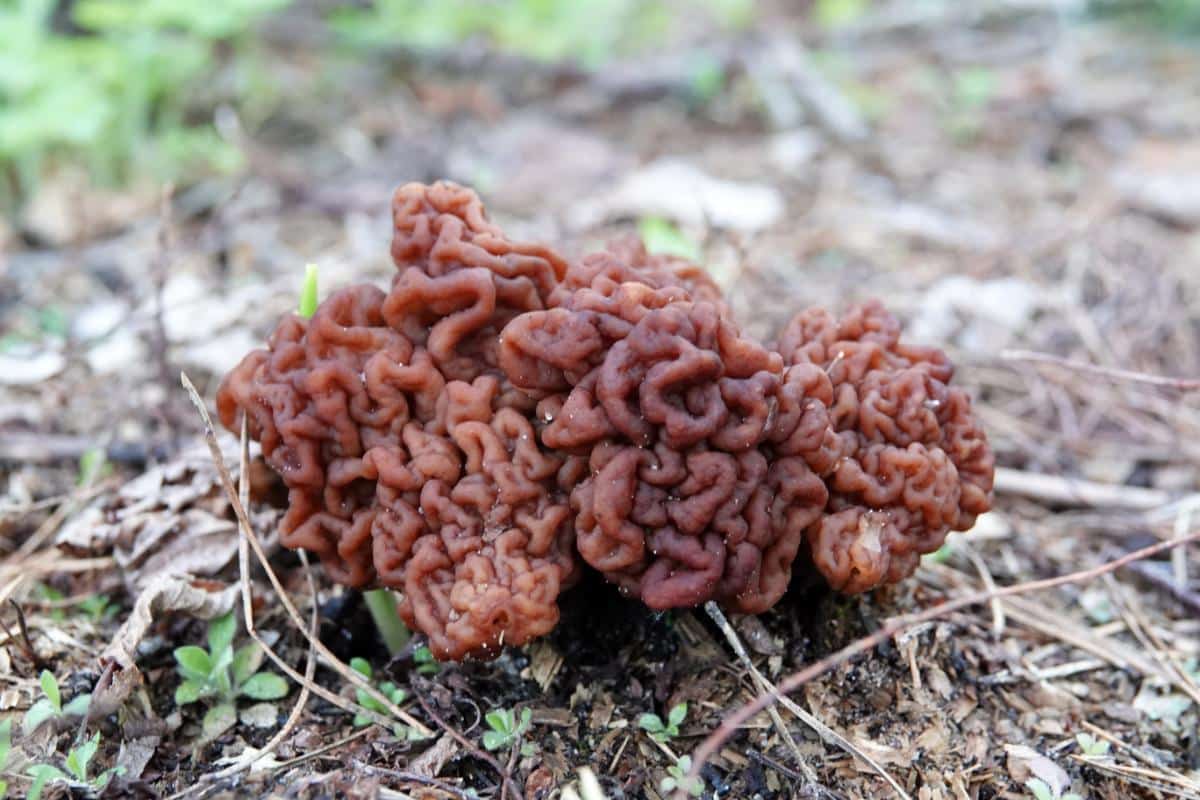
This mushroom contains a dangerous toxin called gyromitrin (also known as gyrotoxin). The body converts gyromitrin into monomethylhydrazine (MMH) after consumption. This compound drains the body’s pyridoxine (vitamin B6) and affects GABA. The compounds are somewhat neutralized with boiling. Many people eat this mushroom when it is properly prepared (make sure you read up on the process before consuming this mushroom!)
Poisoning symptoms start within 6-12 hours after eating the mushroom, sometimes as fast as 2 hours in severe cases. The original symptoms are gastrointestinal distress, like nausea, vomiting, and diarrhea. Neurological symptoms follow quickly with dizziness, tremors, ataxia, and headaches.
This mushroom grows in spring under conifers in northern and mountainous regions of North America and Europe.
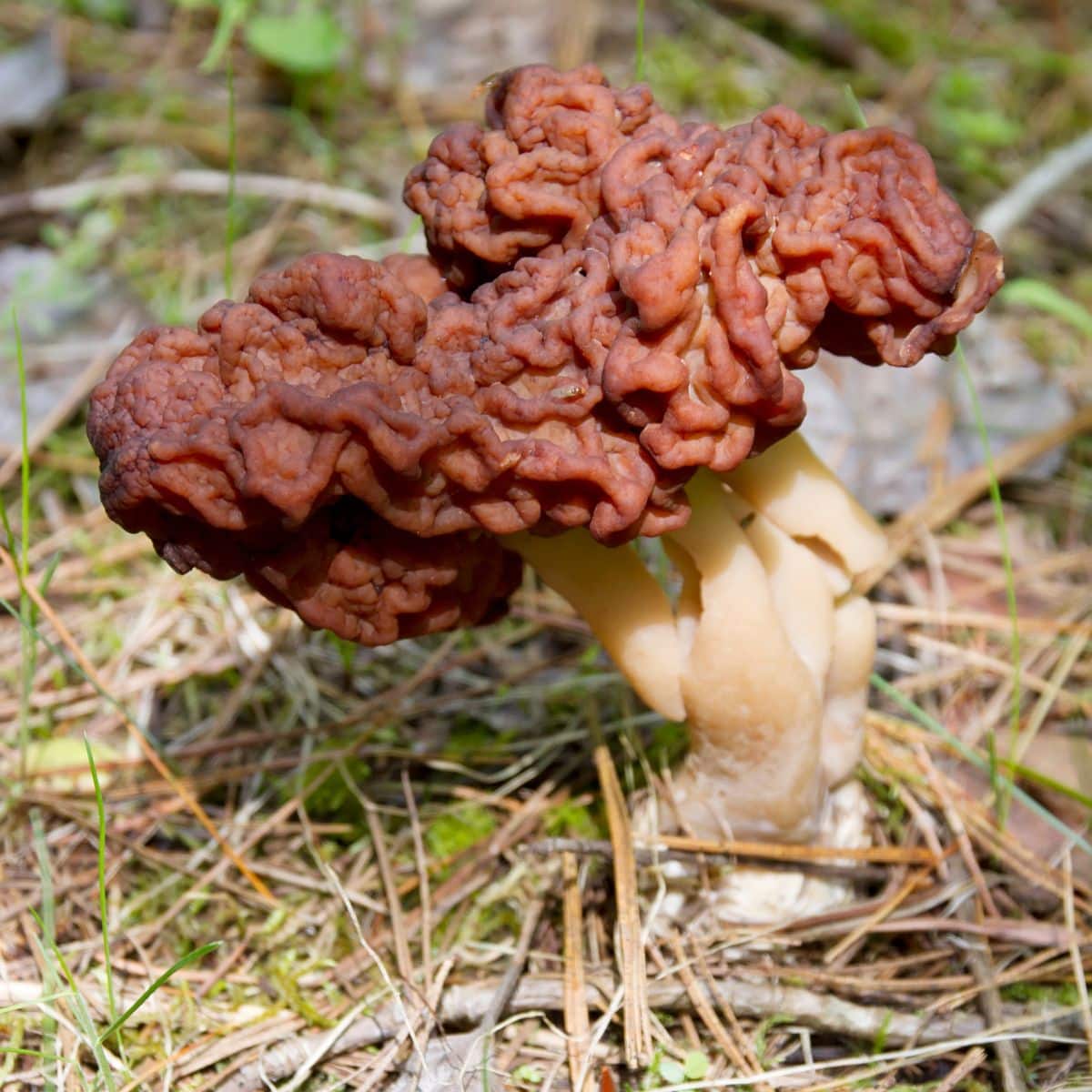
Shrimp of the Woods
Indigo Milk Cap (Just Smurfy)
The indigo milk cap (Lactarius indigo) is a brilliant blue mushroom that “bleeds” an indigo liquid when cut. The “milk” that the indigo milky cap exudes acts as a defense mechanism that all Lactarius species share. This is the only one that bleeds blue, though.
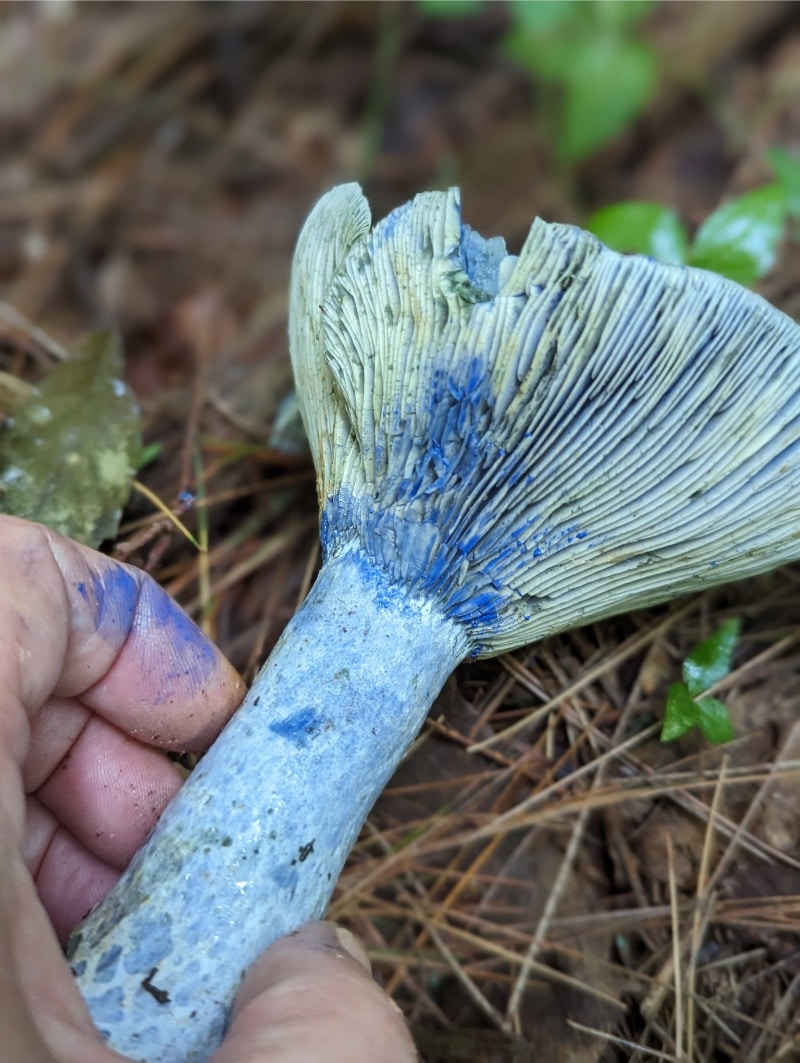
When you cut or scrape the gills, the indigo latex releases immediately. In addition to bleeding blue, the milk actually changes color after a minute. It oxidizes to dark green when exposed to air. The white flesh inside also quickly turns indigo blue after cutting.
Many consider this a choice edible, while others find it nowhere near impressive with its slightly bitter or peppery flavor and grainy texture.
These mushrooms grow from the ground exclusively – they never grow on trees or dead wood. They fruit throughout eastern and southern North America, especially in the Appalachian Mountains.
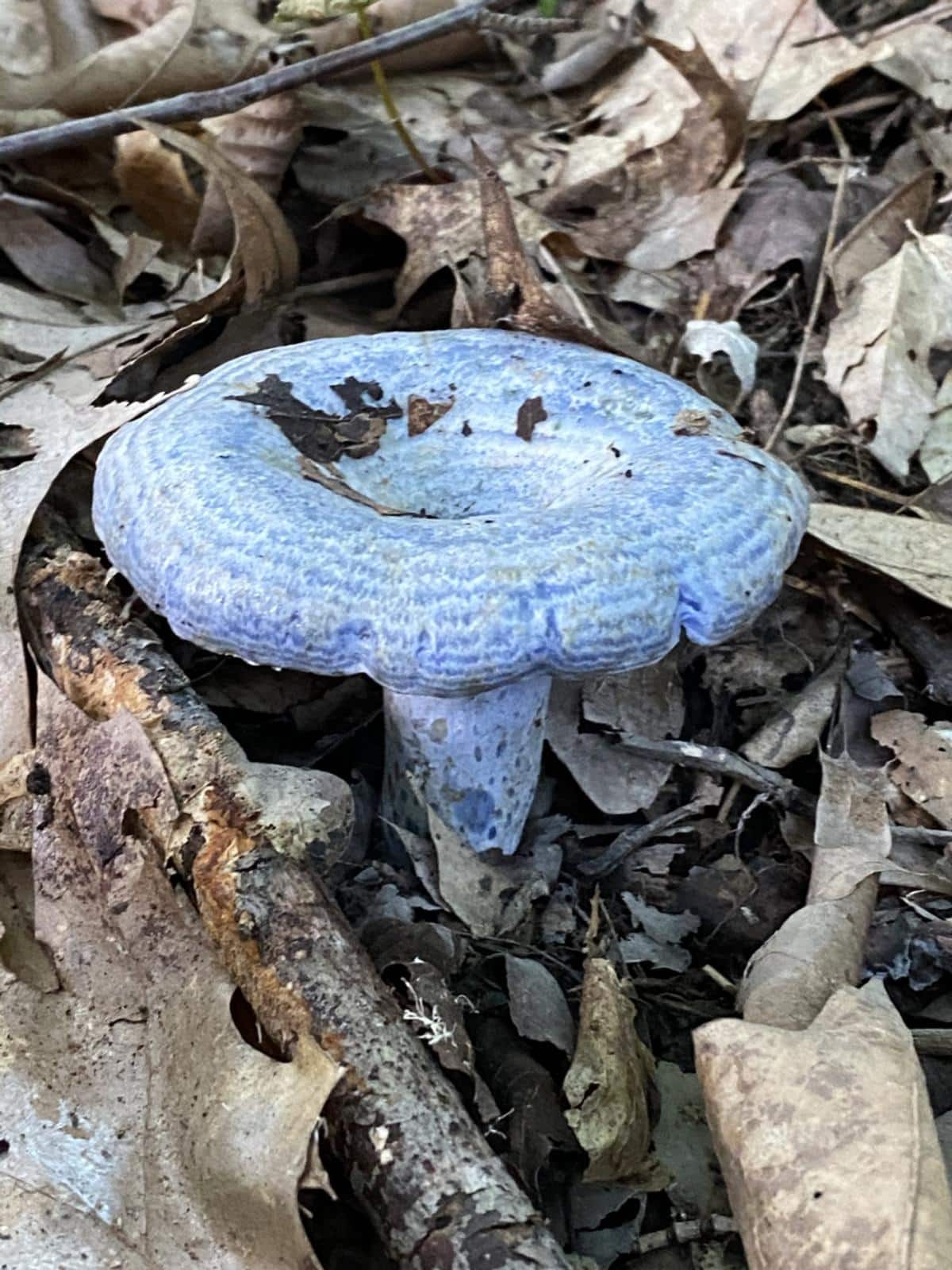
Bioluminescent Mushrooms (Forest Night Lights)
The ethereal glow of Mycena chlorophos is a special site in the forest. This mushroom creates its own light. The pale green glow this bioluminescent species produces helps it survive. Mycena chlorophos attracts insects that respond to light, which then help spread its spores throughout the forest. The eerie illumination might also scare away potential predators that would otherwise eat it. This is definitely one of the weirdest mushrooms in our world.
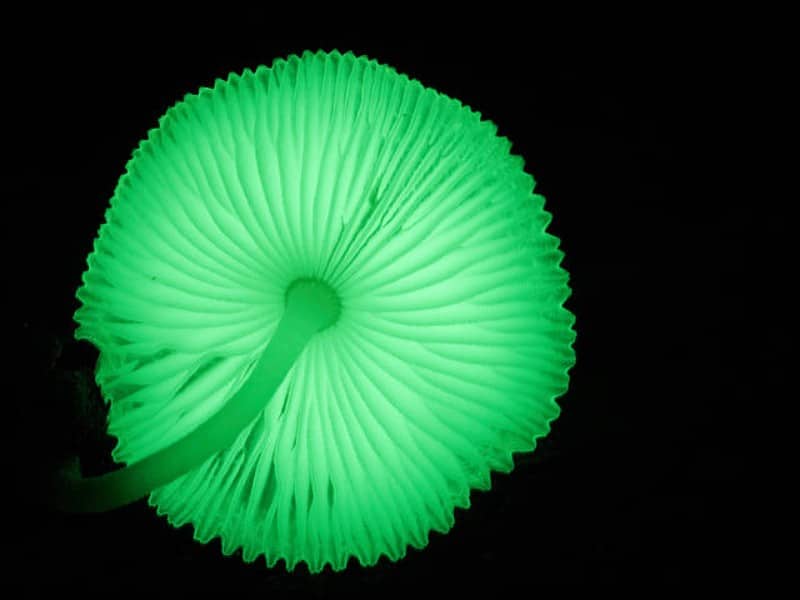
Green fluorescent components, particularly riboflavin (Vitamin B12), create the spooky green light. The mushroom doesn’t glow all the time. It shines brightest at 27°C, usually 25-39 hours after it starts growing. The glow lasts about 3 days when temperatures cool to 21°C before it becomes too faint to see.
These mushrooms grow in subtropical regions of Asia, Australia, and Brazil. They face serious threats because tropical rainforests, their natural habitat, rank among the world’s most endangered ecosystems.
Devil’s Cigar (The Screaming Fungus)
The devil’s cigar or texas star (Chorioactis geaster) is very dramatic. This mushroom hisses and smokes when it releases its spores. The mushroom’s dark, cigar-like shape that opens into a star earned it this devilish name. The devil’s cigar is one of the rarest of the weirdest mushrooms. It has extremely limited distribution.
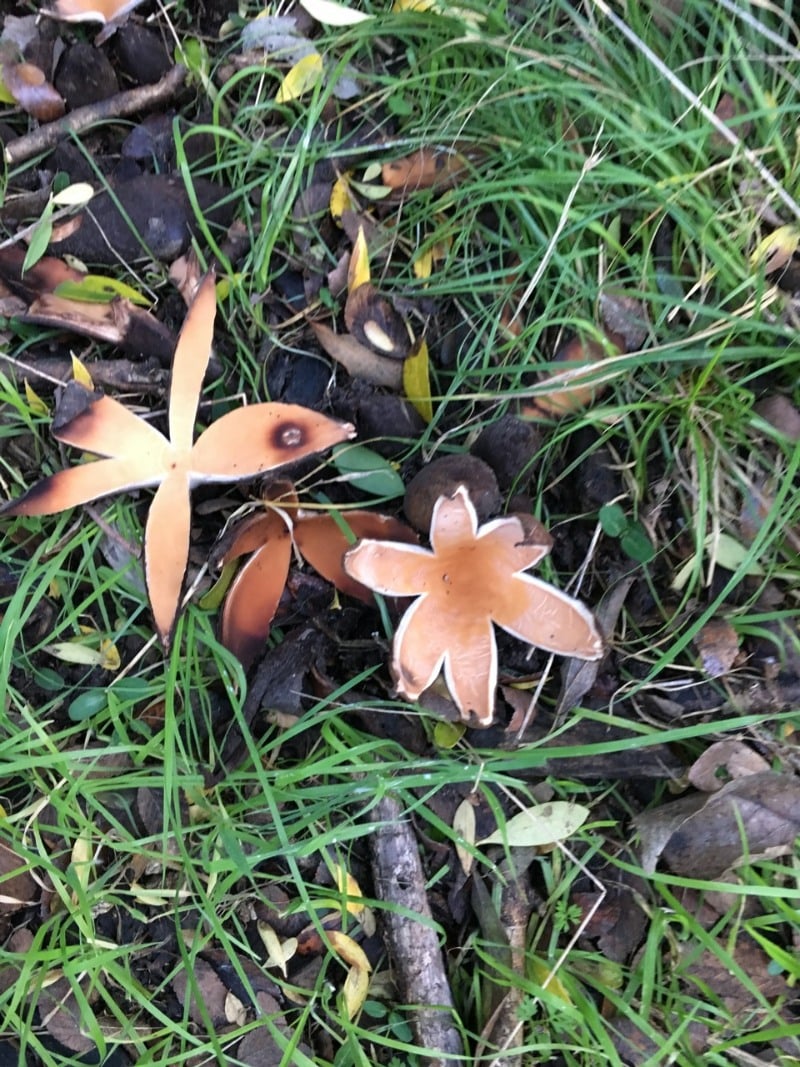
Chorioactis geaster by i-still-listen-to-rap on Mushroom Observer
The fungus splits open with a distinct hissing sound and releases a smoky cloud of spores when it senses changes in wind or humidity. This literally explosive reproduction makes it special – only 15 mushroom species in the world make sounds that humans ca.
The fungus first looks like a dark brown cigar that’s 3-4 inches long with a fuzzy surface. Tiny sacs called asci build up pressure inside. These sacs shoot spores into the air with a fizzing sound that is similar to the sound of opening a soda can. The hollow capsule then splits into 4-7 rays and creates an 8-inch star.
The devil’s cigar is only found in two places worldwide – a few Texas counties and two Japanese prefectures. Scientists still can’t explain this very unusual pattern. Research from 2004 showed these populations have lived apart for about 19 million years, which proves humans didn’t bring them from one place to another.
Devil’s cigar fungi in Texas grow around dead cedar and elm trees, while Japan’s population prefers oak trees. Texas named it the state mushroom in 2021.

Lobster Mushroom (The Parasite)
The lobster mushroom isn’t a mushroom at all—it’s a parasitic fungus (Hypomyces lactifluorum) that takes over other mushroom species and turns them into something completely different.
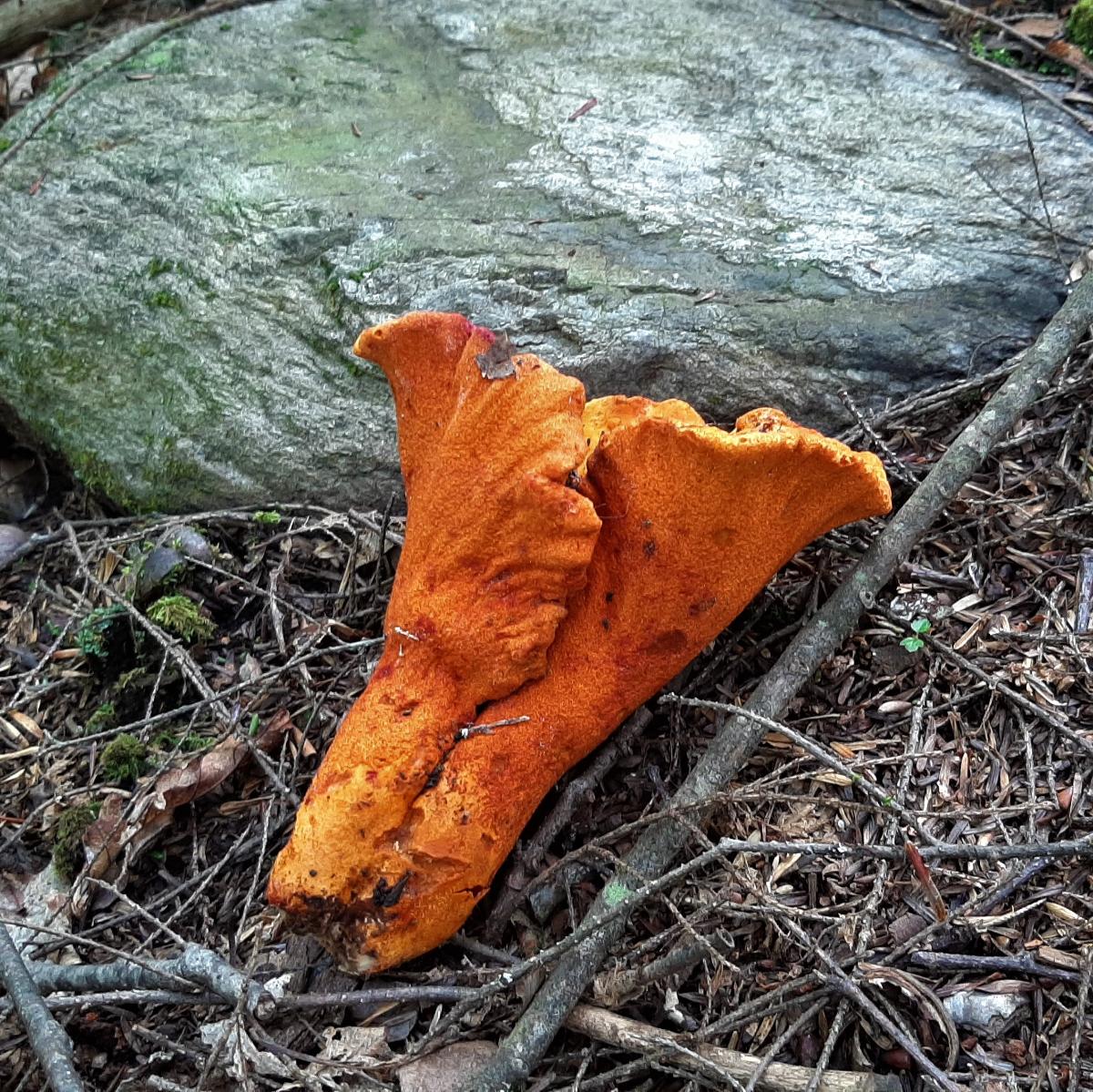
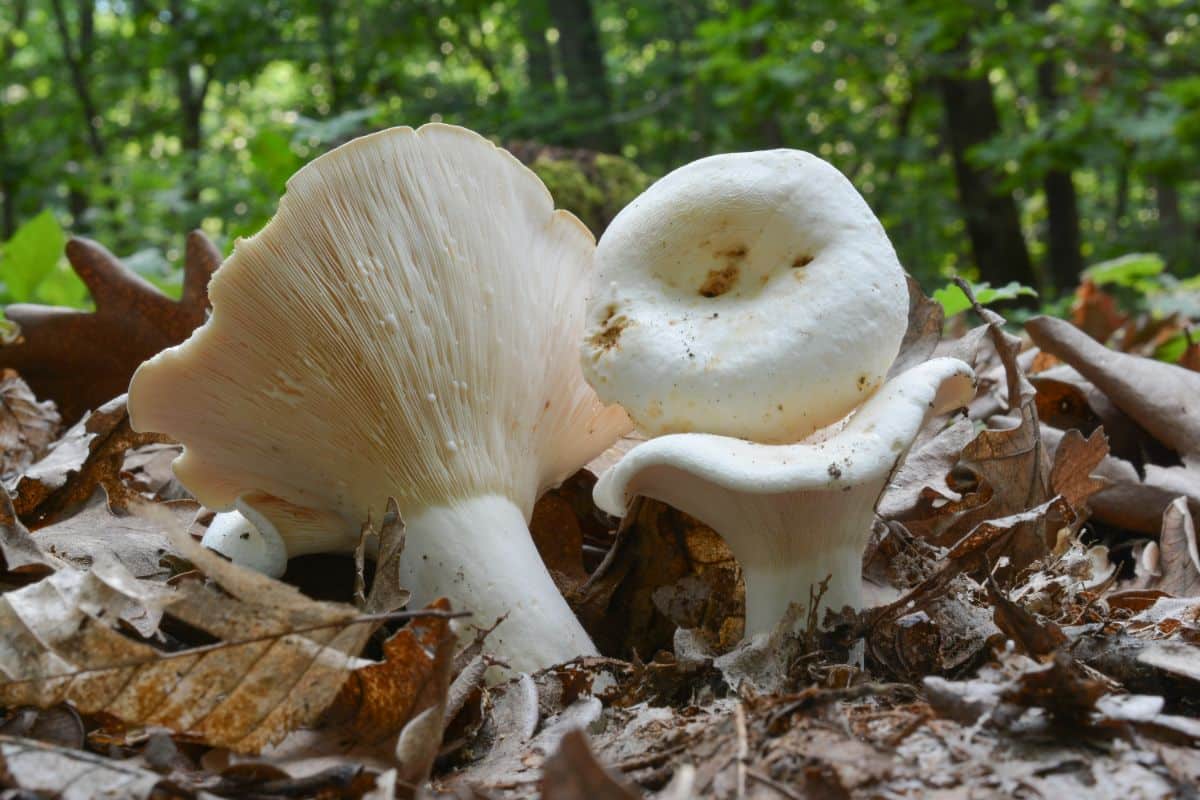
This strange fungal relationship creates one of North America’s weirdest mushrooms. H. lactifluorum targets white species of Russula and Lactarius and takes over the host. The parasite forms a hard, bright orange-red covering that spreads across all surfaces and really disfigures the original mushroom. This bright color, like a cooked lobster’s shell, gives this unusual species its common name.
The parasitic takeover changes both the host mushroom’s appearance and chemistry. As the infection progresses, the parasite turns chemicals into more flavorful compounds, which makes the “lobster mushroom” taste better than its original host. A Quebec study showed that fully infected specimens have mostly lobster mushroom DNA, with just traces from the original species.
The lobster mushroom is an excellent edible species. These mushrooms fruit from mid-summer to early fall in deciduous woods, particularly near oaks and poplars. They grow in the same spots year after year, so it’s worth marking places where you find them.
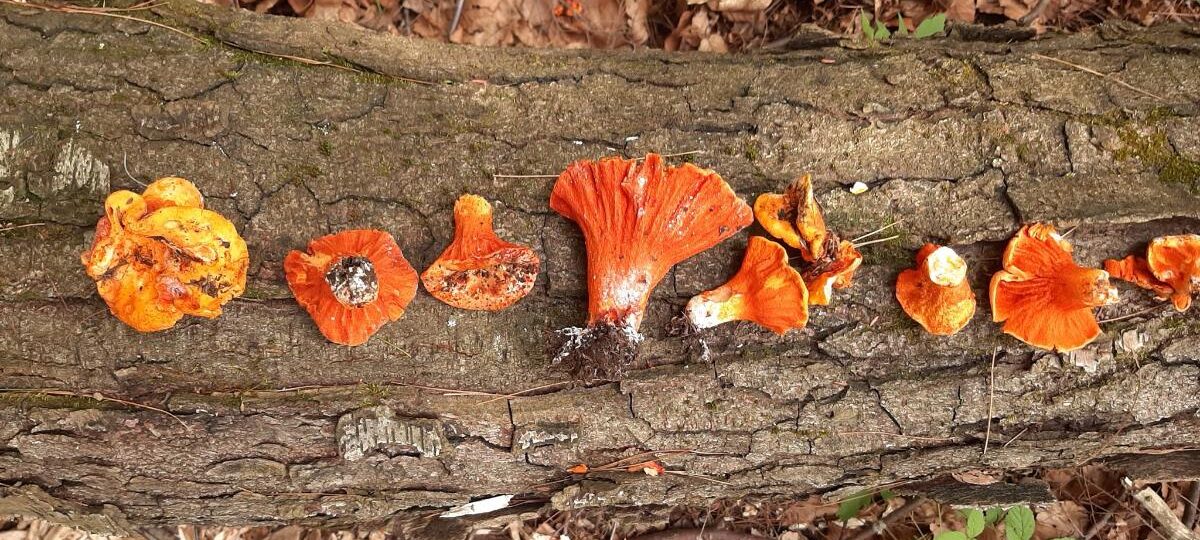
Wood Ear (The Forest’s Ears)
This gelatinous fungus (Auricularia auricula-judae) got its name because it looks just like a human ear, complete with folds and wrinkles that resemble our own ear cartilage.
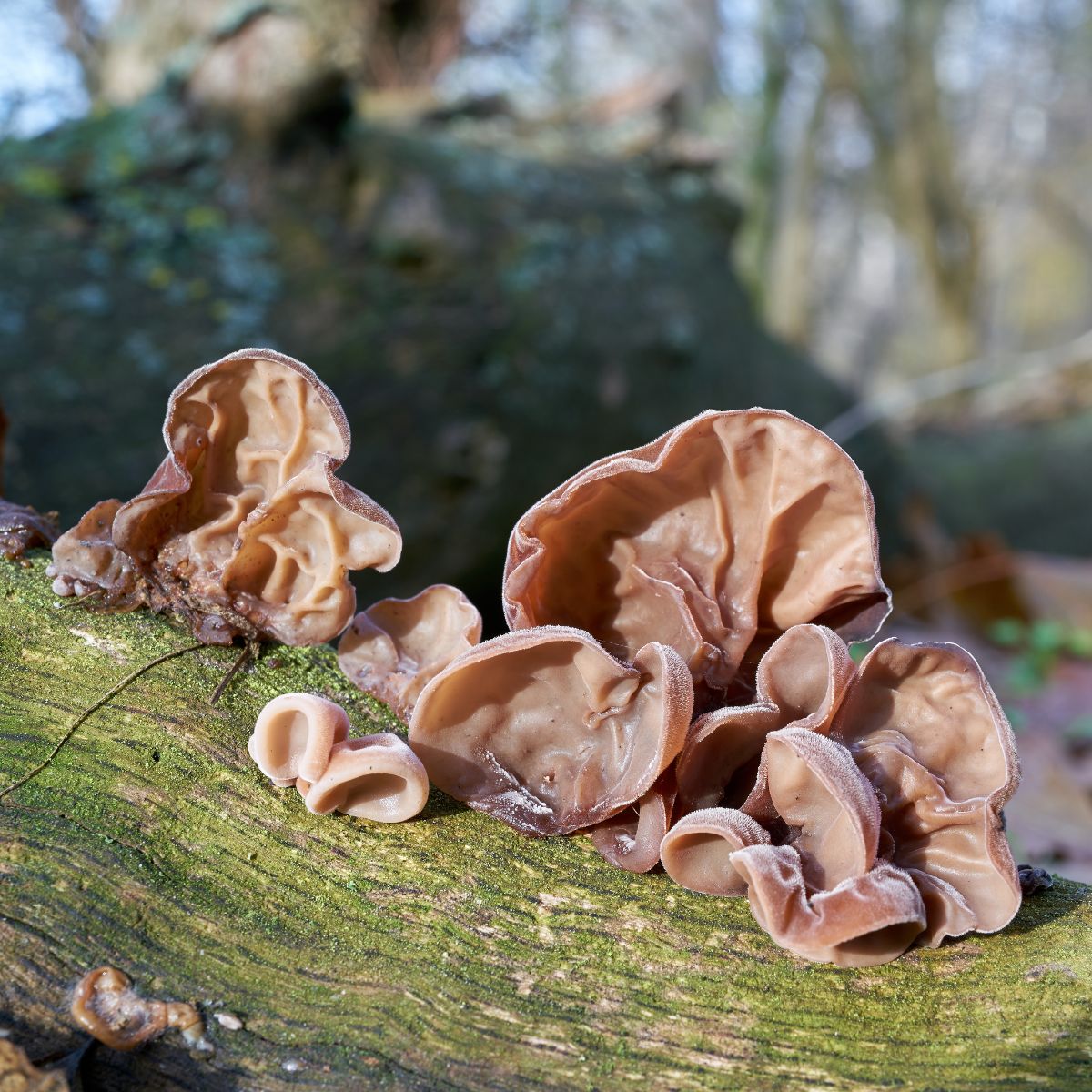
A typical wood ear is 2 to 3 inches wide and has a reddish-tan-brown exterior with hints of purple. The mushroom’s ear-like shape becomes more obvious with age as it develops deeper folds and wrinkles. The upper surface is slightly fuzzy, while the underside stays smooth. This tough little mushroom can survive winter by freezing solid. Then, it thaws out and keeps growing without any damage.
Wood ear mushrooms are a good edible species. They don’t have much flavor but add a nice texture to a soup or stirfry when cooked. The mushroom develops a crunchy-yet-tender bite that soaks up flavors during cooking. It’s most common in Chinese hot and sour soup, Japanese miso soup, and Korean japchae.
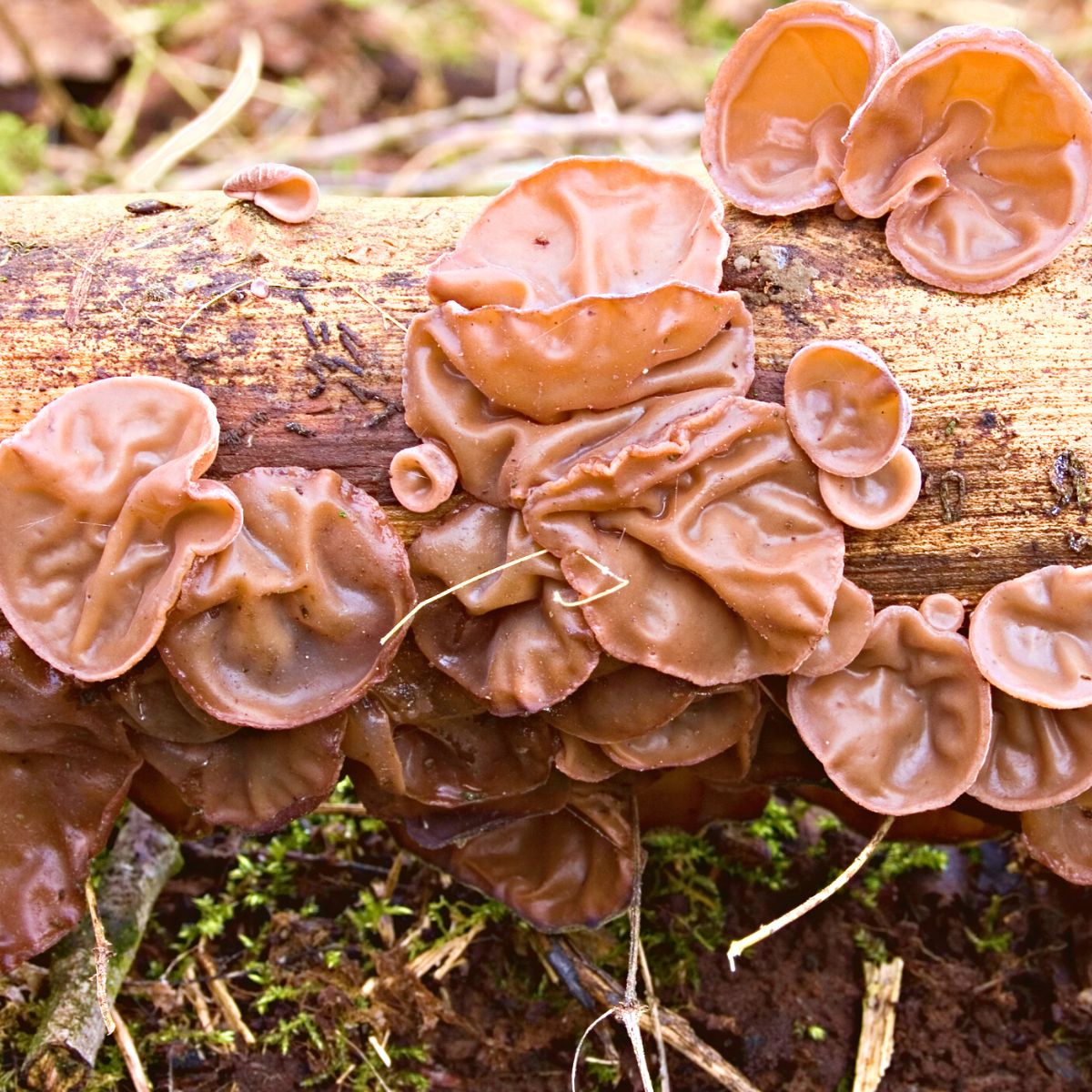
Orange Peel Mushroom (The Orange Peel)
The orange peel fungus (Aleuria aurantia) has a vibrant orange, cup-shaped fruiting body that remarkably resembles discarded orange peels. Since many people toss their orange peels in the woods while hiking, it’s always a guess as to what you’ve found until you’re up close (part of the fun of foraging!).
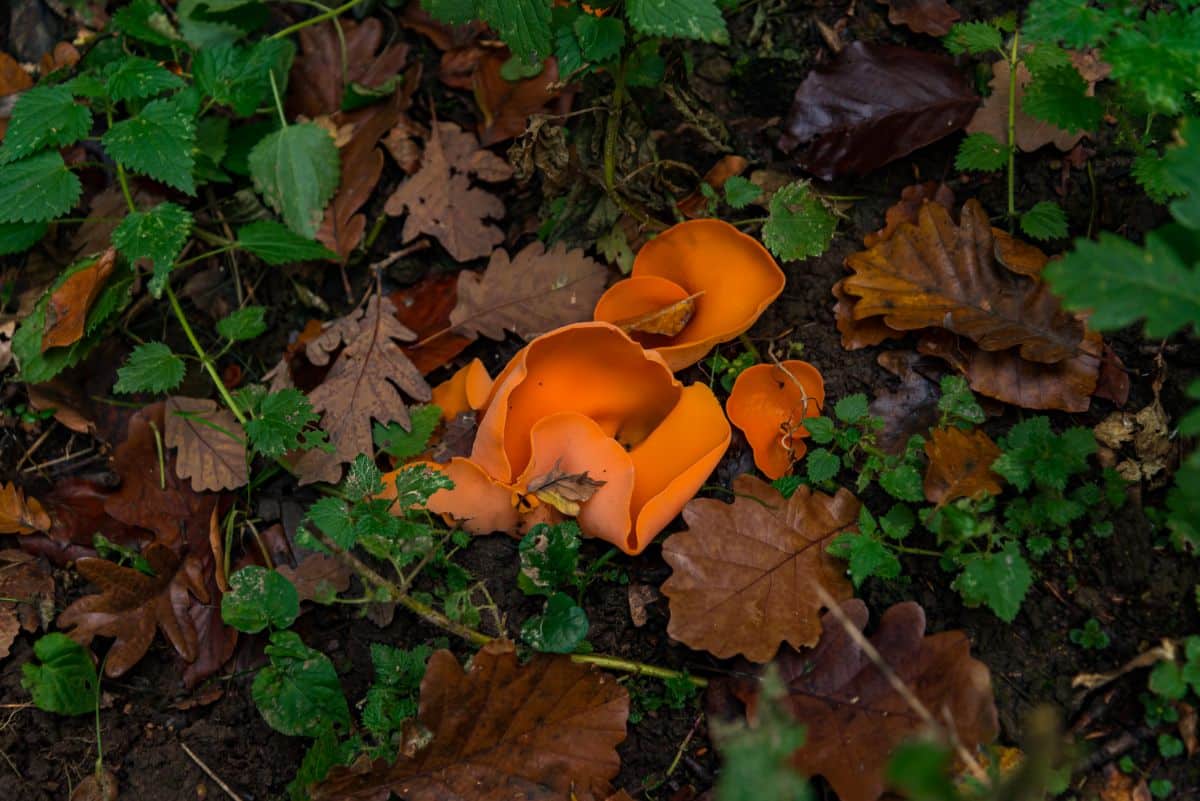
The fruiting bodies measure between 1/2 to 4 inches wide and don’t have stems. Orange peel fungi often grow in clusters, which causes them to become irregularly shaped due to crowding. When young, the undersurface has a whitish, fuzzy texture that gradually becomes smoother and more orange with maturity. The upper surface stays a bright, eye-catching orange throughout its life cycle.
Orange peel fungi are widely distributed throughout North America, Europe, South America, Asia, and Australasia. They prefer to grow on bare clay or disturbed ground such as road banks, trails, and occasionally in urban landscapes or on woodchips.
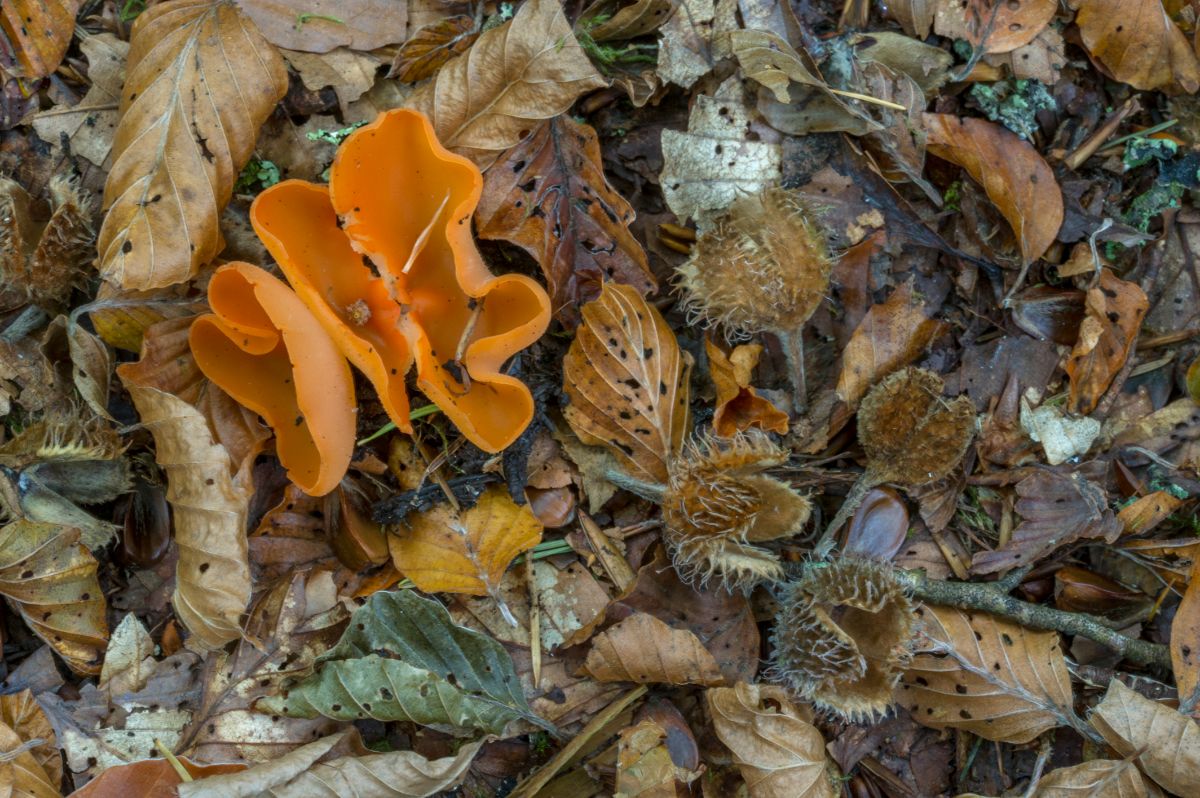
Veiled Lady (Elegant Oddity)
The veiled lady mushroom (Phallus indusiatus) looks just like a bride in her flowing white dress. She’s elegant yet part of the stinkhorn family, which also means she smells terrible. And she means to smell awful because that attracts flies which then land on her and get her spores stuck on their feet. The flies spread the spores, and the veiled lady’s reproductive process was a success!

The skirt, or “indusium,” stretches 3 to 10 inches from beneath the cap. This feature, which is the prettiest, is also where that horrible smell emanates. So, it is the veiled lady’s skirt itself that attracts the insects. The insects, mostly carrion flies that usually lay eggs in rotting flesh, carry the spores to new places as they move around.
The veiled lady mushroom grows in tropical regions all over the world, including southern Asia, Africa, Australia, and parts of the Americas. It grows year-round in places with lots of decaying wood and rich organic soil. The intricate veil of the mushroom lasts just a day or two before it starts to break down. The skirt opens up super fast – it takes only 10-15 hours to unfold, and it usually happens at night.
This mushroom is used in cooking despite its horrible smell when young. The dried veiled lady actually loses all its foul smell when dried and cooked. Chefs love its “smooth, silky, yet subtly crunchy” texture. Before 1979, the lack of these mushrooms made them very expensive, and people used them only for special events. After China started growing them commercially, prices dropped significantly – from about $770 per kilogram in 1982 to $10-20 by 2000.
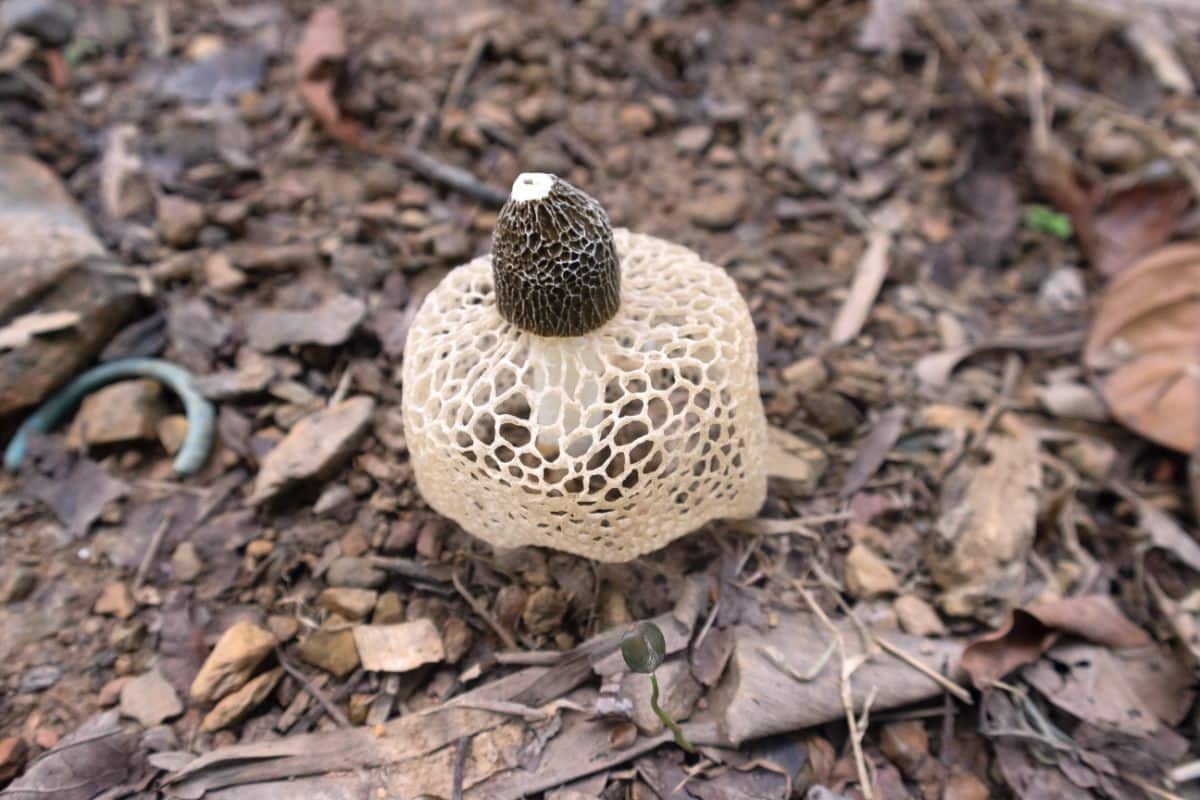


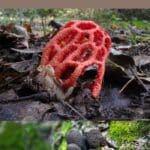
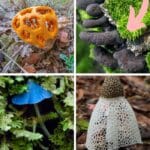
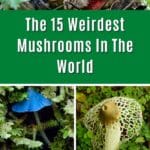
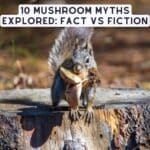
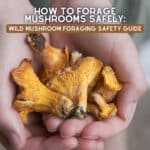
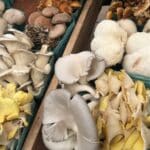
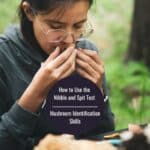
Leave a Reply